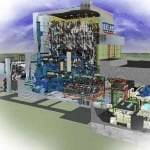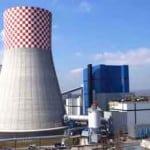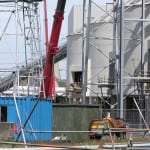There have been a lot of changes in how power plants do business. As financial pressure mounts and lean-staffing strategies are implemented, finding time to do all the work that needs to be done can be a challenge. Many companies are turning to service providers to fill the gaps.
The U.S. Energy Information Administration predicts coal will continue to fuel a sizable portion of North American generation for the foreseeable future. In 2018, coal was still the most-used electricity generation source in 19 states including Colorado, Indiana, Michigan, Minnesota, Missouri, Ohio, and Wisconsin. Servicing this segment of the industry continues to remain a sizable business opportunity.
Amec Foster Wheeler’s (Amec FW’s) circulating fluidized-bed (CFB) technology and operating company, based in Finland, was purchased by Sumitomo Heavy Industries in June 2017, forming Sumitomo SHI FW (SFW). Since that time, the company has been aggressively positioning itself as a leader in equipment supply and services to this sector. To meet the needs of the power generation industry in North America, Sumitomo SFW launched its Americas service business—based in Hampton, New Jersey.
Sumitomo SFW Regional Vice President John Hernandez and Ron Campanella, Services Americas commercial manager, recently participated in an exclusive interview for POWER to discuss their assessment of the North American power market. Their responses, edited for clarity, follow.
POWER: Why did Sumitomo SFW launch a new CFB service business for the Americas?
Hernandez: We formed the CFB Services business to support our customers who own fluidized bed boilers supplied by SFW as well as those supplied by other original equipment manufacturers (OEMs). In North and South America, we are able to provide maintenance and repair services to the owner of any fluidized bed combustion (FBC) boiler or CFB scrubber equipment—from small industrial plants to larger utility-scale plants.
POWER: Can you talk about some of the specific needs of these plants and how the SFW services team can support them?
Campanella: Many plant owners and operators are concerned about complying with new Environmental Protection Agency regulations and need assistance, particularly with boiler tuning and other operational recommendations, such as modernization of industrial- and utility-scale CFB and BFB boilers. Further, we are seeing increasing customer interest in refueling existing CFB boilers with new fuels, with a particular interest in co-firing renewable fuel sources, usually with coal. Other customers are pursuing a complete fuel conversion from the design fuel to a completely different fuel or mix of fuels. No doubt, fuel changes must be thoroughly examined from a combustion point of view, but there are other concerns that must be addressed such as accelerated wear from erosion within the furnace and plugging due to changes in ash properties. We can help customers develop a comprehensive approach to refueling their plant.
We also see the solid fuels market in North America becoming more of a services-based business going forward. There may be spot opportunities for constructing solid fuel plants in the future, likely firing biomass. However, in the short- to medium-term, we will be focused on offering a wide range of maintenance and upgrade services rather than building new solid fuel plants.
POWER: Can you give an example of a CFB services project that helped a U.S. power plant owner faced with changing and challenging market conditions?
Campanella: In one 2 x 330-MW CFB power plant designed to fire 100% petcoke, for example, limitations in the capacity of the ash coolers restricted the power output of the plant. To maintain capacity, the plant used emergency water spray, which resulted in de-fluidizing, rocking up, wet ash, excessive refractory damage, inability to remove ash, and bed ash silo agglomerations. The cooler was designed, supplied, and installed by SFW’s North American CFB services licensee, Wood/Amec Foster Wheeler, with the insertion of cooling coils (Figure 1) utilizing condensate as the cooling medium, thus avoiding the use of emergency spray water and recovering the heat from the bed material. Coolers were installed in fall 2017. The project resulted in a significant reduction in instances that had been causing forced outages and lost equivalent megawatts.
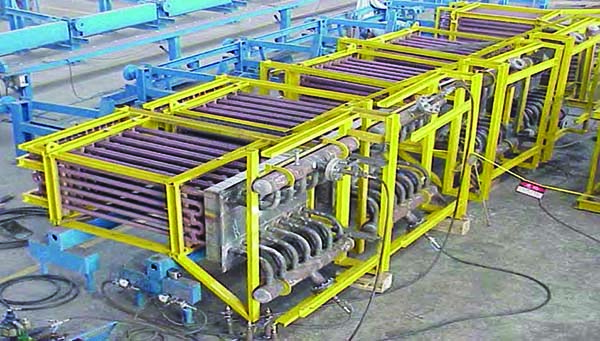 |
|
1. Cooling coils retrofitted into typical stripper coolers. Courtesy: Sumitomo SFW |
In another 2 x 120-MW CFB boiler firing 100% petcoke, the unit was experiencing excessive furnace exit temperatures, resulting in fouling buildup and a gradual de-rate over time. Many operational changes were explored to try to extend the run time between cleanings, but the run time could not be extended beyond six months. The combination of lost generation due to de-rate to control temperatures and the down time for cleaning made this particular unit a perfect candidate for additional furnace evaporative surface to reduce furnace exit gas temperatures. Wingwalls (Figure 2) were designed, supplied, and installed by SFW’s North American licensee, Wood/Amec Foster Wheeler, in one of the two units in spring 2018 and the resultant furnace exit gas temperature reduction (approximately 60F) equated to a reduction in the rate of fouling, allowing the client to extend the period between cleaning outages for up to a year or more depending on operation.
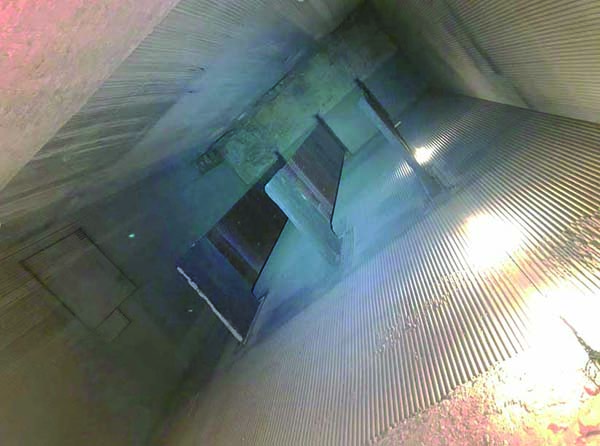 |
|
2. Typical wingwall evaporative surface. Courtesy: Sumitomo SFW |
POWER: Does SFW offer BFB or CFB boiler retrofits for customers who may wish to refuel a plant? What plant size range do you see as your market?
Hernandez: We certainly offer a full range of retrofit services, although the fuel conversion projects we have recently seen are about 100-MW. We are not seeing pulverized coal to BFB or CFB boiler conversion projects for the purpose of burning renewable fuels. We are seeing increasing interest in changing or expanding the fuel mix with existing FBC boilers and in increasing the output of existing plants, depending on fuel.
POWER: Other than a name change, will service customers see any changes to the service provided by SFW?
Hernandez: The SFW North America service organization is staffed by some of the same personnel formerly employed by Amec FW, and they are backed by the technical knowledge and support of SFW—the CFB boiler OEM.
Since June 2017, Sumitomo SHI FW is the new operating entity of the former Amec FW FBC business, previously known as Foster Wheeler. Sumitomo SHI FW represents a continuation of the Amec FW FBC business with the world headquarters based in Finland and operational offices throughout Europe, the U.S., and Asia.
In the Asian market, Sumitomo Heavy Industries was a licensee of the Amec FW CFB technology for more than 10 years. Sumitomo was bullish on this existing license and the business it brought, and thus purchased the entire technology, main headquarters, and global service arm of Amec FW as an investment in the further development of key markets.
What is new is the establishment of the Americas Service Group in April 2018, located in New Jersey, to expand the existing global service group presence in the West. SFW brings with it all the experience and knowledge gained from the long history of plant maintenance, repair, and upgrades that were already in place.
POWER: What plant modernization, equipment upgrade, and technology capabilities does SFW offer the North American power market?
Campanella: We have many service and technology options for our clients. For example, some clients are wrestling with stricter air emissions requirements, so we offer CFB scrubber technology that OEMs lack. We have also helped clients strategize to meet tougher NO x emission requirements by matching potential conversions with the appropriate selective noncataytic reduction (SNCR) and slip catalyst technology, and offer pulse jet fabric filters as an added value to clients. I would say that 90% of our inquiries are driven by fuel change or the desire to increase a plant’s operating capacity. However, when the fuel changes, then so does the potential velocity and temperature profiles throughout the unit, often causing erosion, slagging, fouling, and plugging issues that result in secondary problems in the boiler.
In one CFB facility, for example, a fuel switch increased furnace temperature over time due to fouling of heat transfer surfaces. As furnace temperatures increase, boiler load must be reduced and excess air increased to keep furnace bed temperature below the target maximum of 1,650F. The owner was forced to take the boiler offline more often for cleaning resulting in a significant loss of revenue. In addition, the additional excess air increased the power consumption by the primary, secondary, and induced draft fans. The solution was to add evaporative wing walls that reduced furnace temperatures, eliminated high excess air usage, and consequently reduced the rate of fouling of the back-end surfaces. The customer reports that post retrofit, margins from power sales have returned.
In another case, a CFB boiler designed to fire 100% petcoke switched fuels to coal. With this change, the existing secondary air system and fuel feeding arrangement needed improvement. SFW installed new fuel chutes (Figure 3) with spoon air and refractory linings, and retrofitted new vortex-type secondary air nozzles. The new refractory-lined feeding chutes do not suffer furnace radiation damage, thus requiring less maintenance. The new vortex secondary air nozzles improved air distribution, improving combustion.
 |
|
3. Fuel chutes before (left) and after (right) SFW’s refractory lining upgrade shows elimination of radiation damage. Courtesy: Sumitomo SFW |
Another technical development is increased load flexibility of CFBs when burning renewables. We have the technical capability to determine minimum load for an existing plant when burning an alternative fuel or fuel mix. We are also able to tell clients what equipment changes and/or operating changes will allow their plant to further reduce the unit’s minimum-load point while not impacting full-load operation. Clients are telling us that increasing unit turndown with a stable furnace is becoming increasingly important, but it must be done without risk of tripping at low loads. This issue will rise in importance as more intermittent renewables are added to the grid.
Our Service Americas design team has many years of experience diagnosing boiler performance problems and designing new hardware solutions. For example, recently the floor nozzles in a CFB furnace (where primary air enters the furnace) were installed with a large hole diameter causing air flow/temperature imbalance across the grid. The nozzles are positioned in a region of high turbulence and subject to accelerated erosion. We designed a new quick-changeout nozzle (Figure 4) that is more robust than the OEM design, but with variable hole sizes. This allows us to optimize the pressure loss across the entire grid floor to achieve a more homogeneous bed temperature. Replacement nozzles are simply twisted into place and stitch welded to the robust coupling, reducing operations and maintenance, and outage costs.
 |
|
4. SFW’s custom-designed changeout nozzle with variable hole sizes installed at a utility power plant. Courtesy: Sumitomo SFW |
POWER: One of the plant modernization options you offer is SmartBoiler. What is your SmartBoiler concept and why should power generators be interested?
Hernandez: SmartBoiler is offered to aftermarket service clients as well as for new plant construction projects. In general, SmartBoiler provides an additional diagnostic tool to operators by monitoring key operating parameters and sending this information through the SmartBoiler server/software for analysis, sending information back to the distributed control system and simultaneously sending this information to SFW process experts, all on a real-time basis. SmartBoiler is the software mechanism that allows data to be monitored in real time via the internet by SFW’s process specialists, who are able to perform value-added analysis, performance evaluation, and troubleshooting of deviations in process parameters, and then pass that information back to the plant control room.
This data handling process also gives the control room operator an opportunity to interact with and receive support from SFW technical specialists whenever needed. SmartBoiler allows the plant owner and SFW to identify important trends that may develop in the future so that preventive measures may be taken. SmartBoiler also provides the control room operator with a variety of diagnostic tools that can be used to closely evaluate the operation of the boiler.
Perhaps the most critical need for plant operators is access to sufficient data to efficiently and safely operate the plant. The problem with getting good data is it’s usually laborious and time-consuming to extract from the plant’s data historian. SmartBoiler downloads data into the plant historian, but it also sends the data collected directly to SFW, so when a client does have a problem, the data is readily available on the SFW server. We have found this action lifts the burden from the plant to analyze the stored data and then send it to SFW. Avoiding this step alone can save a week or two when solving pressing problems. SmartBoiler can help a client maintain high overall lifecycle operation of the boiler and avoid unplanned outages due to unexpected boiler problems.
POWER: Another option you offer is Long Term Service Agreements (LTSAs). Can you explain the nature of this service and why power generators should be interested?
Campanella: LTSAs are offered to service clients as well as for new plant construction projects. It offers a flexible approach toward achieving long-term cooperation with customers. These agreements can be tailored to meet the customer’s specific needs and budgets by securing a wide range of SFW support services—from home office support and consulting services to a combination of home office support, on-site field services, and even spare parts/material management. LTSAs can result in improved availability, maintenance cost reductions, and improved operations.
SFW will typically nominate an LTSA team to service the customer throughout the term of the agreement to ensure continuity and improve relationships with the customer’s operations and maintenance personnel. This team, depending on the final scope of the LTSA, will include a customer manager, design engineer, and technical field advisor or boiler inspector. ■
—Ravi Krishnan is founder and managing director of Krishnan & Associates Inc.
[Ed. update: Corrections were made to various portions of this article on Oct. 1, 2019.]







